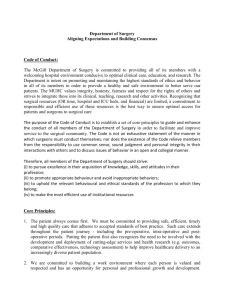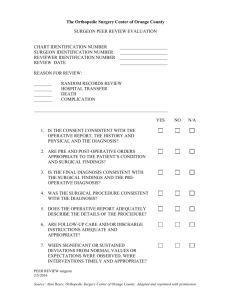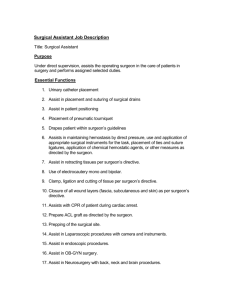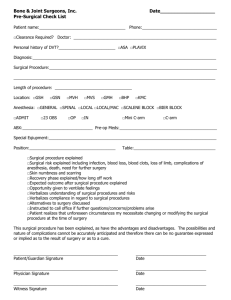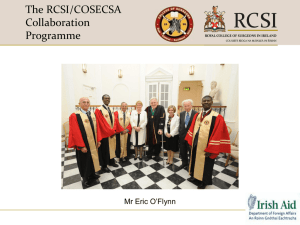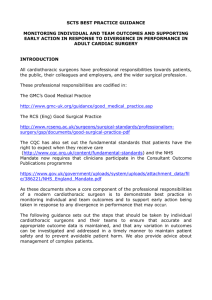Computer Assisted Surgery: the Future is Now Computer assisted
advertisement
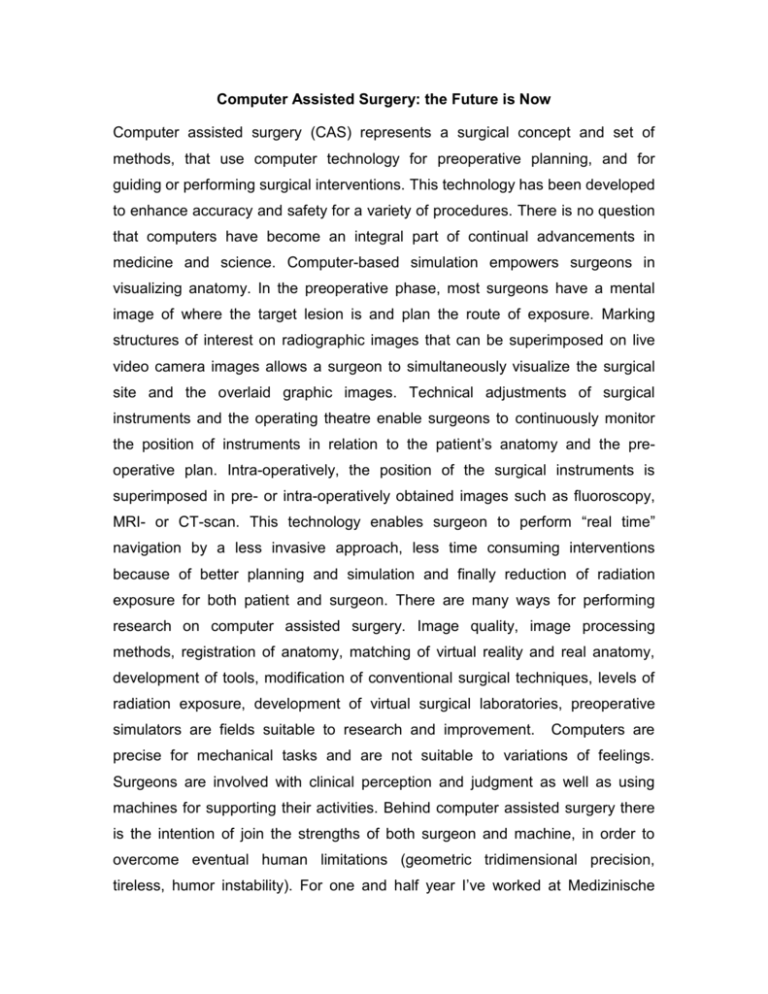
Computer Assisted Surgery: the Future is Now Computer assisted surgery (CAS) represents a surgical concept and set of methods, that use computer technology for preoperative planning, and for guiding or performing surgical interventions. This technology has been developed to enhance accuracy and safety for a variety of procedures. There is no question that computers have become an integral part of continual advancements in medicine and science. Computer-based simulation empowers surgeons in visualizing anatomy. In the preoperative phase, most surgeons have a mental image of where the target lesion is and plan the route of exposure. Marking structures of interest on radiographic images that can be superimposed on live video camera images allows a surgeon to simultaneously visualize the surgical site and the overlaid graphic images. Technical adjustments of surgical instruments and the operating theatre enable surgeons to continuously monitor the position of instruments in relation to the patient’s anatomy and the preoperative plan. Intra-operatively, the position of the surgical instruments is superimposed in pre- or intra-operatively obtained images such as fluoroscopy, MRI- or CT-scan. This technology enables surgeon to perform “real time” navigation by a less invasive approach, less time consuming interventions because of better planning and simulation and finally reduction of radiation exposure for both patient and surgeon. There are many ways for performing research on computer assisted surgery. Image quality, image processing methods, registration of anatomy, matching of virtual reality and real anatomy, development of tools, modification of conventional surgical techniques, levels of radiation exposure, development of virtual surgical laboratories, preoperative simulators are fields suitable to research and improvement. Computers are precise for mechanical tasks and are not suitable to variations of feelings. Surgeons are involved with clinical perception and judgment as well as using machines for supporting their activities. Behind computer assisted surgery there is the intention of join the strengths of both surgeon and machine, in order to overcome eventual human limitations (geometric tridimensional precision, tireless, humor instability). For one and half year I’ve worked at Medizinische Hochschule Hannover as a Humboldt fellow. My area of research was accuracy of computer assisted orthopedic surgery. In this way I’ve taken part on, at least 15 different projects. These projects involved the analysis of image quality used for navigation, comparison of different techniques of navigation for the same surgical purpose, development of strategies for facilitating usage of equipments in operation theatre, measure of radiation exposure during surgical procedures with and without navigation, development of tools for supporting navigation and robotic usage for fracture reduction. These projects resulted on 12 publications at peer-reviewed periodicals indexed on MEDLINE. Computer assisted surgery is a relatively new field of research, with no more than twenty years. However the number of publications in the last five years has grown exponentially. New surgical techniques not foreseen in the past are now reality in many centers, as implantation of custom made prosthesis for particular bone defects in craniomaxilofacial and orthopedic surgery. By now many surgical simulators are available and we expect that the so-called learning curve of medical students and residents will no longer occur during real medical practice but in virtual reality. Computer assisted surgery is, therefore, an impressive tool that can modify how we learn and execute medical acts. Thirty years ago one could not imagine that information could be delivered worldwide at the speed that occurs today. Nowadays, everywhere is possible to find one with laptops or smartphones making connections in real time with people around the world. Computers have changed the way we live and perceive reality. They invaded our hospitals where day-by-day analogical information as patient records and images are being converted into digital files. Surgery is a field where precision and safety are more than desirable. Computers are helping surgeons to understand and perform accurate diagnosis and treatments. Definitively the future is now. Mauricio Kfuri Junior, MD Assistant Professor – Knee and Orthopedic Trauma Surgery Ribeirão Preto Medical School – São Paulo University

